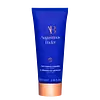What's inside
What's inside
 Key Ingredients
Key Ingredients

 Benefits
Benefits

 Concerns
Concerns

 Ingredients Side-by-side
Ingredients Side-by-side

Water
Skin ConditioningDecyl Glucoside
CleansingGlycerin
HumectantCocamidopropyl Betaine
CleansingSalicylic Acid
MaskingXanthan Gum
EmulsifyingPhenoxyethanol
PreservativeSodium Chloride
MaskingCaprylyl Glycol
EmollientBakuchiol
AntimicrobialBisabolol
MaskingEthylhexylglycerin
Skin ConditioningHexylene Glycol
EmulsifyingOlea Europaea Leaf Extract
PerfumingSodium Hydroxide
BufferingAloe Barbadensis Leaf Extract
EmollientDipotassium Glycyrrhizate
HumectantSapindus Mukorossi Peel Extract
Skin ConditioningDextrin
AbsorbentPerilla Ocymoides Leaf Extract
TonicWater, Decyl Glucoside, Glycerin, Cocamidopropyl Betaine, Salicylic Acid, Xanthan Gum, Phenoxyethanol, Sodium Chloride, Caprylyl Glycol, Bakuchiol, Bisabolol, Ethylhexylglycerin, Hexylene Glycol, Olea Europaea Leaf Extract, Sodium Hydroxide, Aloe Barbadensis Leaf Extract, Dipotassium Glycyrrhizate, Sapindus Mukorossi Peel Extract, Dextrin, Perilla Ocymoides Leaf Extract
Water
Skin ConditioningGlycerin
HumectantSodium Cocoyl Isethionate
CleansingBehenyl Alcohol
EmollientSodium Cocoyl Glycinate
CleansingGlycol Distearate
EmollientSodium Lauryl Sulfoacetate
CleansingArachidyl Alcohol
EmollientCetearyl Alcohol
EmollientLeuconostoc/Radish Root Ferment Filtrate
AntimicrobialCitric Acid
BufferingArachidyl Glucoside
EmulsifyingHydroxyacetophenone
AntioxidantLactobacillus
Skin ConditioningNiacinamide
SmoothingXanthan Gum
EmulsifyingSodium Citrate
BufferingCocos Nucifera Fruit Extract
EmollientGalactoarabinan
Quillaja Saponaria Wood Extract
Skin ConditioningPropanediol
SolventLansium Domesticum Leaf Extract
Skin ConditioningMaltodextrin
AbsorbentCaprylic/Capric Triglyceride
MaskingHydrolyzed Rice Protein
Skin ConditioningTocopheryl Acetate
AntioxidantMoringa Oleifera Seed Oil
EmollientAlanyl Glutamine
HumectantArginine
MaskingCeramide NP
Skin ConditioningCeramide AP
Skin ConditioningGlycine
BufferingLysine
Skin ConditioningPentylene Glycol
Skin ConditioningPhytosterols
Skin ConditioningProline
Skin ConditioningSodium Cetearyl Sulfate
CleansingOrobanche Rapum Extract
Skin ProtectingSodium Hydroxide
BufferingAscorbic Acid
AntioxidantBehenic Acid
CleansingBrassica Alba Seed Extract
Skin ConditioningHydrogenated Lecithin
EmulsifyingLeontopodium Alpinum Flower/Leaf Extract
Skin ConditioningOleic Acid
EmollientOligopeptide-177
Oligopeptide-6
Skin ConditioningPalmitic Acid
EmollientPhenylalanine
MaskingPotassium Sorbate
PreservativeSodium Chloride
MaskingStearic Acid
CleansingSunflower Seed Acid
CleansingWater, Glycerin, Sodium Cocoyl Isethionate, Behenyl Alcohol, Sodium Cocoyl Glycinate, Glycol Distearate, Sodium Lauryl Sulfoacetate, Arachidyl Alcohol, Cetearyl Alcohol, Leuconostoc/Radish Root Ferment Filtrate, Citric Acid, Arachidyl Glucoside, Hydroxyacetophenone, Lactobacillus, Niacinamide, Xanthan Gum, Sodium Citrate, Cocos Nucifera Fruit Extract, Galactoarabinan, Quillaja Saponaria Wood Extract, Propanediol, Lansium Domesticum Leaf Extract, Maltodextrin, Caprylic/Capric Triglyceride, Hydrolyzed Rice Protein, Tocopheryl Acetate, Moringa Oleifera Seed Oil, Alanyl Glutamine, Arginine, Ceramide NP, Ceramide AP, Glycine, Lysine, Pentylene Glycol, Phytosterols, Proline, Sodium Cetearyl Sulfate, Orobanche Rapum Extract, Sodium Hydroxide, Ascorbic Acid, Behenic Acid, Brassica Alba Seed Extract, Hydrogenated Lecithin, Leontopodium Alpinum Flower/Leaf Extract, Oleic Acid, Oligopeptide-177, Oligopeptide-6, Palmitic Acid, Phenylalanine, Potassium Sorbate, Sodium Chloride, Stearic Acid, Sunflower Seed Acid
Ingredients Explained
These ingredients are found in both products.
Ingredients higher up in an ingredient list are typically present in a larger amount.
Glycerin is already naturally found in your skin. It helps moisturize and protect your skin.
A study from 2016 found glycerin to be more effective as a humectant than AHAs and hyaluronic acid.
As a humectant, it helps the skin stay hydrated by pulling moisture to your skin. The low molecular weight of glycerin allows it to pull moisture into the deeper layers of your skin.
Hydrated skin improves your skin barrier; Your skin barrier helps protect against irritants and bacteria.
Glycerin has also been found to have antimicrobial and antiviral properties. Due to these properties, glycerin is often used in wound and burn treatments.
In cosmetics, glycerin is usually derived from plants such as soybean or palm. However, it can also be sourced from animals, such as tallow or animal fat.
This ingredient is organic, colorless, odorless, and non-toxic.
Glycerin is the name for this ingredient in American English. British English uses Glycerol/Glycerine.
Learn more about GlycerinChances are, you eat sodium chloride every day. Sodium Chloride is also known as table salt.
This ingredient has many purposes in skincare: thickener, emulsifier, and exfoliator.
You'll most likely find this ingredient in cleansers where it is used to create a gel-like texture. As an emulsifier, it also prevents ingredients from separating.
There is much debate on whether this ingredient is comedogenic. The short answer - comedogenic ratings don't tell the whole story. Learn more about comegodenic ratings here.
The concensus about this ingredient causing acne seems to be divided. Research is needed to understand if this ingredient does cause acne.
Scrubs may use salt as the primary exfoliating ingredient.
Learn more about Sodium ChlorideSodium Hydroxide is also known as lye or caustic soda. It is used to adjust the pH of products; many ingredients require a specific pH to be effective.
In small amounts, sodium hydroxide is considered safe to use. However, large amounts may cause chemical burns due to its high alkaline.
Your skin has a natural pH and acid mantle. This acid mantle helps prevent harmful bacteria from breaking through. The acid mantle also helps keep your skin hydrated.
"Alkaline" refers to a high pH level. A low pH level would be considered acidic.
Learn more about Sodium HydroxideWater. It's the most common cosmetic ingredient of all. You'll usually see it at the top of ingredient lists, meaning that it makes up the largest part of the product.
So why is it so popular? Water most often acts as a solvent - this means that it helps dissolve other ingredients into the formulation.
You'll also recognize water as that liquid we all need to stay alive. If you see this, drink a glass of water. Stay hydrated!
Learn more about WaterXanthan gum is used as a stabilizer and thickener within cosmetic products. It helps give products a sticky, thick feeling - preventing them from being too runny.
On the technical side of things, xanthan gum is a polysaccharide - a combination consisting of multiple sugar molecules bonded together.
Xanthan gum is a pretty common and great ingredient. It is a natural, non-toxic, non-irritating ingredient that is also commonly used in food products.
Learn more about Xanthan Gum